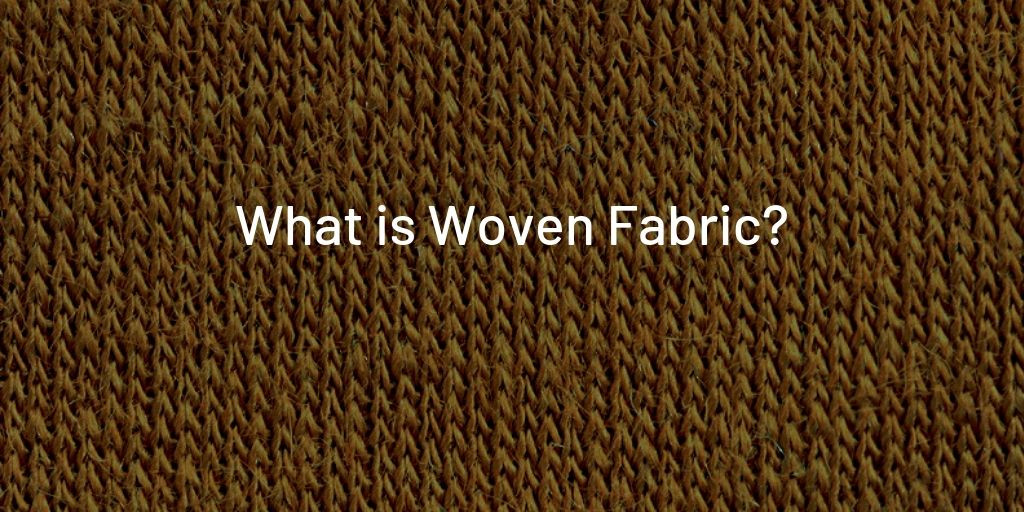What is Woven Fabric?
Aug 23rd 2019
Every sewing enthusiast should get a little informed about the types of fabric before choosing one for a sewing project. Choosing the right color and pattern aren’t enough to help you wear a piece that you actually like. Other factors, like the type of fabric, will affect the quality of the final result.
Fabrics are either knit or woven. These two types differ in almost everything; how they’re made, whether they wrinkle, how much they’re likely to stretch, and whether they shrink or fray.
Knowing the type of your fabric allows you to care for it properly before and after you’ve executed an elegant custom-made piece. In this article, you’ll know everything about woven fabrics.
Everything You Need to Know About Woven Fabrics
Even if you’re shopping for clothes, it’s still important to know the type of fabric you’re choosing. Some experienced users can tell the type of fabric by looking at. Sometimes, it’s not that easy, especially if you’re not that trained and the stitches are too small.
Look
If you feel that the stitches aren’t clear enough, you can use a magnifying glass to take a look at the fabric. The fibers, pieces of thread or yarn, are weaved in a crisscross form. The basket-like weave is a distinctive feature of the woven fabric.
Stretch
Woven fabrics don’t stretch much. If you pull the fabric really hard, it will stretch a little along its length, but it will hardly stretch along its width. This is one of the features that make woven fabrics quite easy to work with.
Wrinkle
Doing a wrinkle test will help you determine whether your fabric is woven or knit. Take a small piece and ball it up in your fist and press hard. If it creases, then this is probably a woven fabric.
Shrink
Unlike knit fabrics, woven fabric isn’t prone to shrinking. However, if you use very hot water, you might experience some shrinking. The only way you can maintain a piece made of woven fabric is to use a material that has already been shrunk in the manufacturing process. The higher the percentage of natural fibers like cotton in your fabric, the more prone to shrinking it will be.
Fray
Woven fabrics unravel easily so they’ll fray. As a result, you should finish the fabric with a serger or a zigzag stitch to prevent fraying. This will guarantee that working with your woven fabric will be a lot easier.
Types of Woven Fabrics
Woven fabrics are made of two or more threads or yarn interlaced at right angles on top of each other. They type of fibers used gives the fabric its distinctive name and features.
Woven fabrics are quite easy to work with because they don’t stretch much. Having a high count fabric, with more threads, means that the fabric will be more durable. Low count fabrics are less durable and will snag easily. Here are some types of woven fabrics that you might want to try for your upcoming sewing project.
- 1.Buckram Fabric
This fabric is used as supportive material in necklines, collars, waistbands, and other parts where you need to reinforce the fabric you’re working with. It’s made of woven weave that’s supported by fillers and adhesive materials that will give it more strength and durability.
Buckram fabric is very useful to amateur and experienced sewing enthusiasts because it overcomes the problems associated with other softer fabrics like satin and silk. This fabric is usually white and has a coarse texture. It’s widely used in linings and can also be used in bags.
- 2.Cambric Fabric
A great choice for women’s and kids’ clothes that need to be crisp, Cambric fabric is a lightweight material which has a stiff finish. It’s one of the finest and most dense types of materials that can be used for different clothing apparel. Most cambric fabrics are made of cotton.
- 3.Chiffon Fabric
Chiffon is probably one of the most popular types of woven fabrics and also the most luxurious. This lightweight smooth fabric has a luminous finish and is usually made of silk yarn. However, silk chiffon is very expensive and this prompted manufacturers to make new versions that contain polyester yarn.
- 4.Poplin Fabric
If you wish to make a fitted shirt, then you should think about using poplin. This rather durable fabric is similar to cotton but is stiffer so it’s an excellent choice for tight-fitting shirts that fit beautifully under a formal suit. Now you can find poplin fabrics that are made of polyester blends to overcome the problems associated with using pure cotton. Poplin fabric is treated so it doesn’t wrinkle easily so you can safely wear it all day long. If it creases, you can easily iron it.
- 5.Wool Dobby Fabric
The dobby fabric is made of woven yarn produced on the dobby loom. The fibers might be the same color or different. Wool dobby fabric can be used for dresses because it drapes beautifully. When fine yarn is used, the fabric is lightweight and looks slightly patterned.
- 6.Corduroy Fabric
Corduroy fabric is usually made of cotton but most of the time cotton is combined with polyester and other synthetic fibers. Corduroy has a visible and distinctive pattern that runs throughout the length of the fabric. Some lightweight fabric has a short pile. Ironing this fabric can damage it, so you should do it on the wrong side. At the same time, you shouldn’t press the iron too hard as this might crush the pile.
- 7.Crepe Fabric
Crepe is either made of silk fibers or silk combined with synthetic fibers. Crepe is a popular choice for blouses and dresses. It’s one of the most popular choices for summer and formal occasions because the fabric feels luxurious. It’s suitable for daily wear as well because it’s comfortable. Some crepe fabrics are made of wool fibers.
Woven fabrics shouldn’t be washed in hot water. Lukewarm water is enough to prevent the fabric from shrinking and to maintain its status. Use a mild detergent and no bleach to make sure that the fabric stays in shape.




